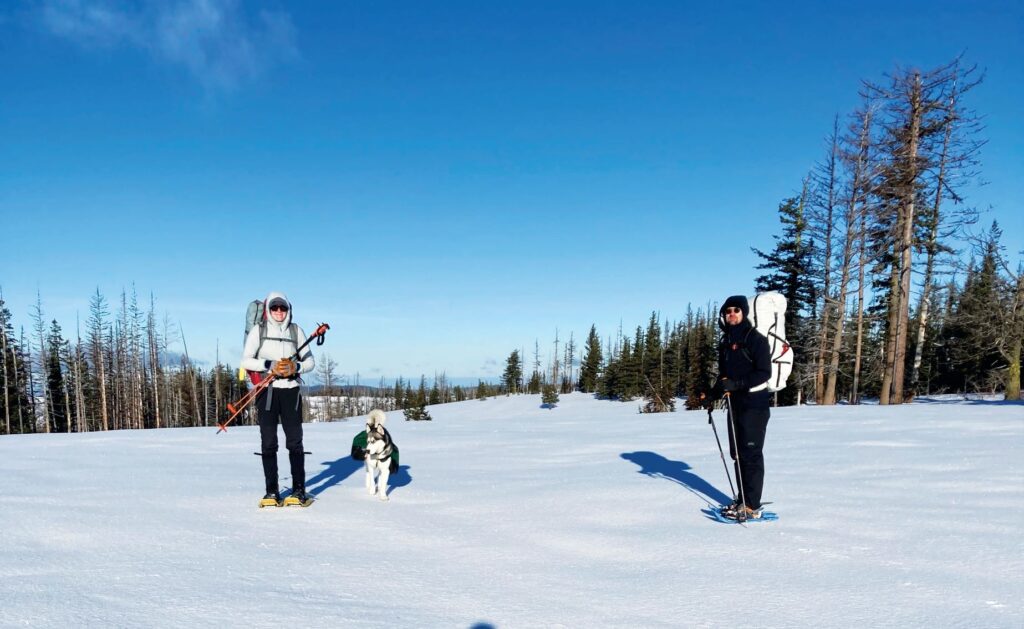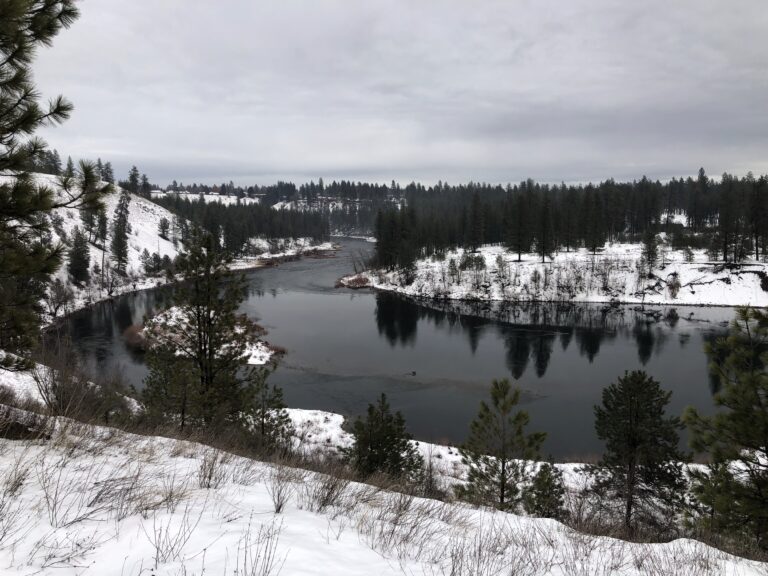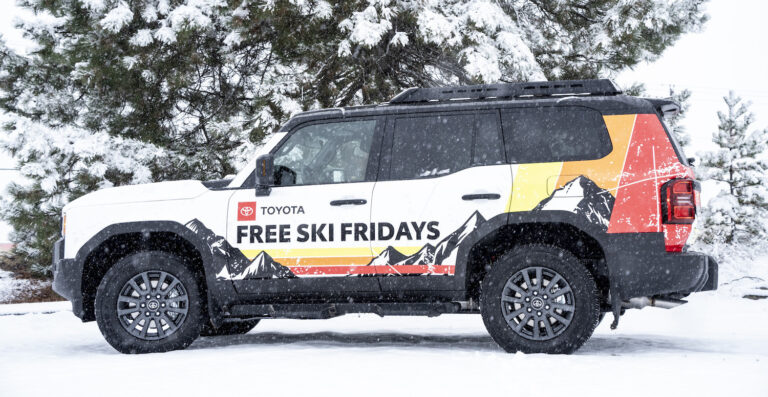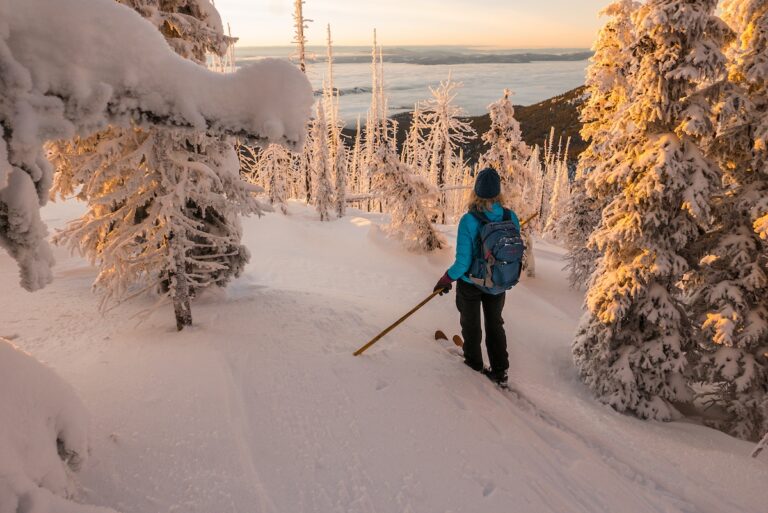Last January, two friends and I had a three-day weekend coming up, but our adventure opportunity coincided with a terrible weather window for snow play in the Spokane area. The forecast included daytime highs and even overnight lows projected to remain above freezing, plus an inversion layer threatened to keep the area shrouded in dense fog.
The local snowpack was already in poor condition and shrinking fast too. We scoured weather forecasts and SnoTel site data for all of eastern Washington, and decided our best option for semi-decent snow and a chance at blue skies was a trip to the Wenaha-Tucannon Wilderness in the southeast corner of Washington State. The diminished snowpack was better in the high country there compared to anywhere else in the region, but the relatively low elevation trailheads were snow-free.
The Wenaha-Tucannon has long been one of my go-to hiking locations for both late fall and early spring, with portions of the trail system below 2,000′ elevation and accessible year-round. Other parts of the trail system are above 6000′ elevation and can be great snowshoe destinations, provided it’s possible to access the trailhead (which always requires a little extra research to assess current conditions).
I’ve always wondered if it would be possible to reach Oregon Butte in the middle of winter. At 6,385′ elevation, it is the highest of 13 named peaks found within the Wenaha-Tucannon Wilderness.
If there was anyone else crazy enough to be out there that weekend, we didn’t see them.
It’s an easy walk-up via a well-maintained trail to a manned fire lookout in the summer, but the closest I had come to a winter visit was on a trip to the nearby Godman Guard Station the previous February. That trip included several feet of fresh powder and fantastic skiing, but also found us at least 10 miles distant from the Teepee Trailhead with not enough time and energy to dedicate to the quest.
For this new attempt, we decided to approach from the north, starting at the Panjab Trailhead near the Tucannon River. We donned heavy packs full of winter gear with snowshoes strapped to the outside for the early miles, but found snow deep enough to require snowshoe use once we reached 4,500′ elevation.
This was also the trickiest section of the entire route, as we reached a snowfield that had warmed above freezing, consolidated, and then re-frozen. With the wrong snowshoes, this portion would have been treacherous. Fortunately we all had mountaineering snowshoes with adequate traction to prevent a fall on the steepest section of the route, which is an area containing avalanche terrain that should not be attempted in certain snow conditions.
Once safely through the steep portion of the climb, we reached the Mount Misery Trail and tucked our camp just inside the protection of a copse of trees at Indian Corral. Nearby Dunlap Spring was surrounded by snow but still accessible and flowing, so we had easy access to water.
We soon had our camp situated and enjoyed our first evening of the extreme solitude found on a mid-winter backpacking trip. If there was anyone else crazy enough to be out there that weekend, we didn’t see them.

We got started early on day two, with a loose goal of attempting to hike to Oregon Butte and back on the Mount Misery Trail. We knew it would require a 10-mile round-trip day, which can be a difficult distance on snowshoes depending upon conditions.
The conditions we were experiencing were deteriorating, with temperatures dropping fast and the wind picking up substantially, but not to the point where any of us felt unsafe or uncomfortable continuing. By noon we reached our destination, where we could at least enjoy the near view of the historic fire lookout, even if we couldn’t enjoy the distant views due to the dense fog that had settled on the summit.
After a short lunch break in the shelter of some nearby trees, we set out to retrace our steps back to camp.
Along the way, I suddenly felt a snap in one snowshoe as the metal plate in my binding failed. It was little more than a noisy annoyance on the relatively flat terrain of the Mount Misery Trail. It continued to make a clicking noise with every step, but it solidified my concerns about returning to the trailhead via the steep and icy section on the Panjab Trail.
I had supplies for an emergency fix to keep my binding attached to my boot for flotation, but my snowshoe was no longer rock solid on the treacherous terrain we had ascended the previous day. As a group we had already discussed exiting via a different route, and with my broken binding I felt like there was no other choice. It would be unsafe to trust the binding to keep me stable on the icy terrain.
Fortunately, we all had a good understanding of the trail system (and maps to keep us on track). We woke up the morning of the third day and packed our camp under beautiful clear skies with the intention of exiting via the nearby Rattlesnake Trail.
While none of us had ever traveled the route in winter, we were familiar with the trail and knew what to expect. With my broken binding I was concerned about the snow depth on one short and steep section, but by the time we arrived there the snow was melted enough to not require the use of snowshoes.
Along the way we were treated to crystal clear skies and outstanding views to the west, including the faint profile of the very distant Mount Rainier on the horizon. I’d always wanted an opportunity to say “the mountain is out” from eastern Washington!
The real crux of the exit route ended up being the stream crossing at the bottom of the grade. I was prepared to wade across if need be, but fortunately we found safe passage on a log jam. From there it was only a short road hike to connect back to the initial trailhead and complete our winter backpack through the heart of the Wenaha-Tucannon.
Holly Weiler enjoys backpacking in all seasons and is a longtime contributor to Out There Outdoors. She currently writes The Trailhead column and Hike of the Month.
Originally published in the January-February 2022 issue. Find more stories about snowshoeing in the OTO archives.













